When to Split in Blackjack – Splitting Cards Explained for Dummies
Posted by Harry Kane on Monday, August 1, 2016
Anyone who has played blackjack before will be familiar with the concept of splitting pairs. In essence, when you get dealt a pair of cards with the same numerical value, then you have the option to split them into two different hands. You’ll need to place another bet, equal to your initial wager, then you have the opportunity to beat the dealer twice. But how do you know when it’s best to split your hand, and when it is a better to stick with what you have been given? Well, as you find when using basic strategy to play blackjack, the decision is dependent on two factors; the pair itself and the dealer’s up-card. Here you will find a simple and straightforward guide to when you should split pairs to optimise your chances of success.
Always Split Aces
This is one of the few situations where the dealer’s up-card has no impact on the action you should take. Basically, your two Aces equal 12, as one is played as an 11, with the other having a value of 1. If you play these cards as one hand, then you will only get to 21 if you are dealt a 9. If you were dealt a card with a value of 10, you would have no option other than to play your hand with both Aces having a value of 1, bringing the total of your hand back to 12 (which is where you started in the first place). Yet if you split, then you have four different ways in which to get to 21 with either hand, by getting a 10, Jack, Queen or King. Any reliable guide to splitting pairs in blackjack will advise to always split a pair of Aces.
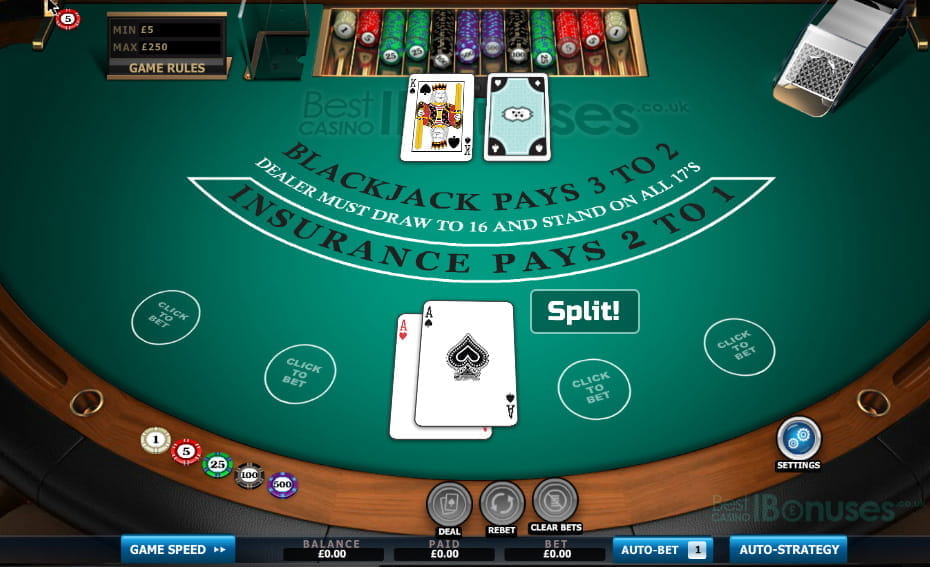
Do not Split 10s
You know the saying “if it aint broke, don’t fix it”, well that’s precisely the case with a pair of 10s. In essence, you are starting the game with one of the best possible hands. The dealer has a very slim chance of getting 21 and beating you. Therefore, by splitting your pair you could jeopardise your chances of winning. The exception to this rule comes into effect for card counters. They may opt to split a pair of 10s when this could potentially give them an advantage. But unless you are an experienced card counter, you should never split a pair of 10s.
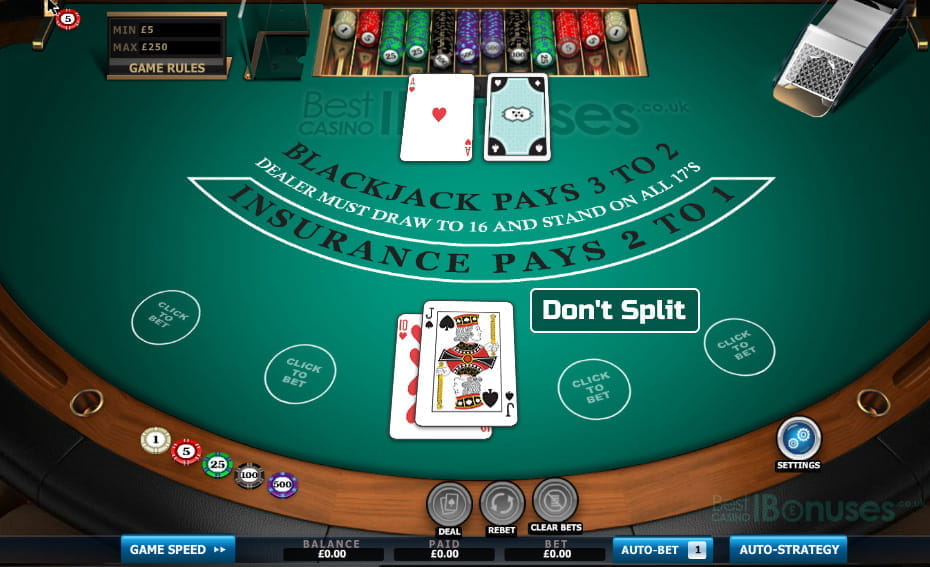
Split 9s in Most Situations
If you get a pair of 9s and the dealer’s up-card is numerical, then basic strategy indicates that you should split your pair. However, if the dealer has a 7, then you should play your hand without splitting. The logic here is that there is a high probability that the dealer’s hole card will be a 10. In such case, this would give the dealer a count of 17, on which he would need to stand. As such, your 18 would beat the dealer. If it turns out that the dealer’s hole card is not a 10, then there is a strong possibility that they will go bust anyway.
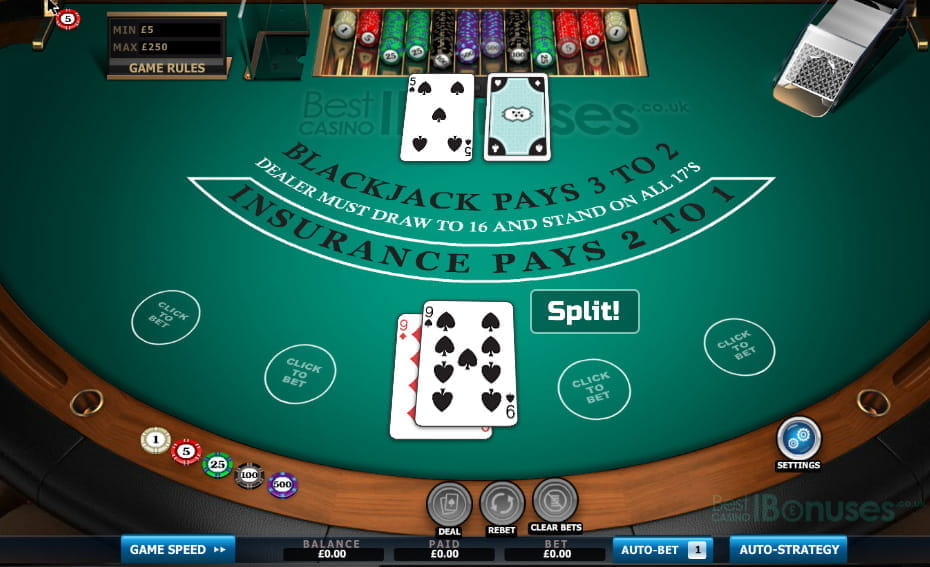
Always Split 8s
If you are dealt a pair of 8s, your total of 16 is a relatively weak hand. This hand will most probably lose, unless the dealer busts. Yet if you opt to hit, you have a high chance of busting yourself, given that any card with a value above 5 will push your total over 21. Therefore, you boost your chances if you split your pair. Say you draw a 9 or 10, you are more likely to get a push, or even to beat the dealer’s hand. Alternatively, if you draw a low card, then you can hit again and likely keep your hand below a value of 21. What’s more, you only need success with one of your two hands in order to break even.
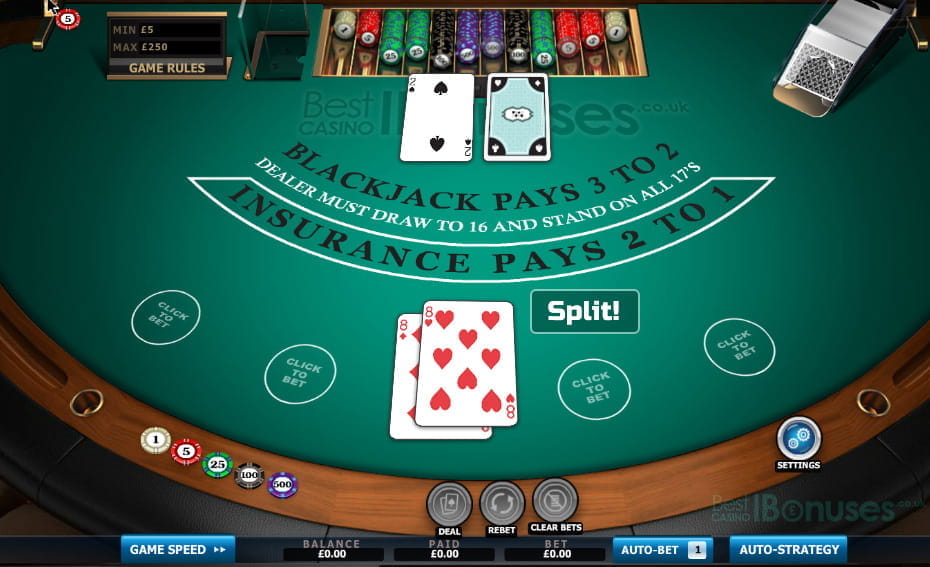
How to Deal with 6s and 7s
If the dealer has an up-card of 2 – 7, then you should split pairs of 6s and 7s. There are several reasons for this action. For starters, a pair of 6s or 7s is a very weak hand, and you can easily bust when you hit. When the dealer has any card from 2 to 7, they also have a higher chance of getting a stiff hand and busting. So in this situation, you have a better chance of getting a good hand by splitting your cards and trying your chances, and hopefully, the dealer will bust.
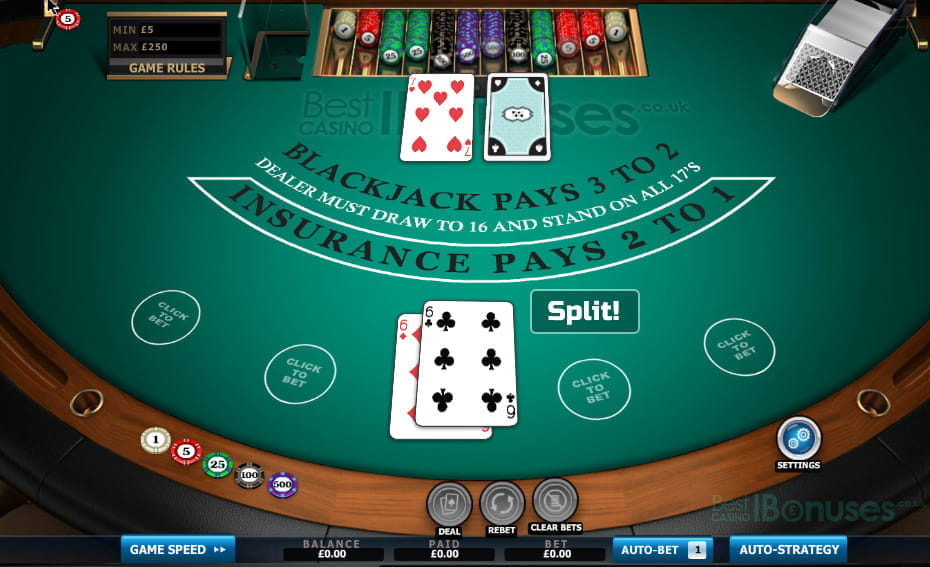
Do not Split 5s
You should treat a pair of 5s in the same way that you would treat 10s – do not split them. The best approach is to look at the cards as a single card with a value of 10. Then, you should double down, as the chances of you getting a high valued hand are in your favour. Whereas, if you opt to split your 5s, you basically give up a strong starting hand and end up with two weaker hands. A hand starting with a 5 can easily become stiff, as 7s, 8s, 9s and all 10 valued cards will make the hand stiff. Unless you are an experienced card counter, the best option is to stick with your pair of 5s.
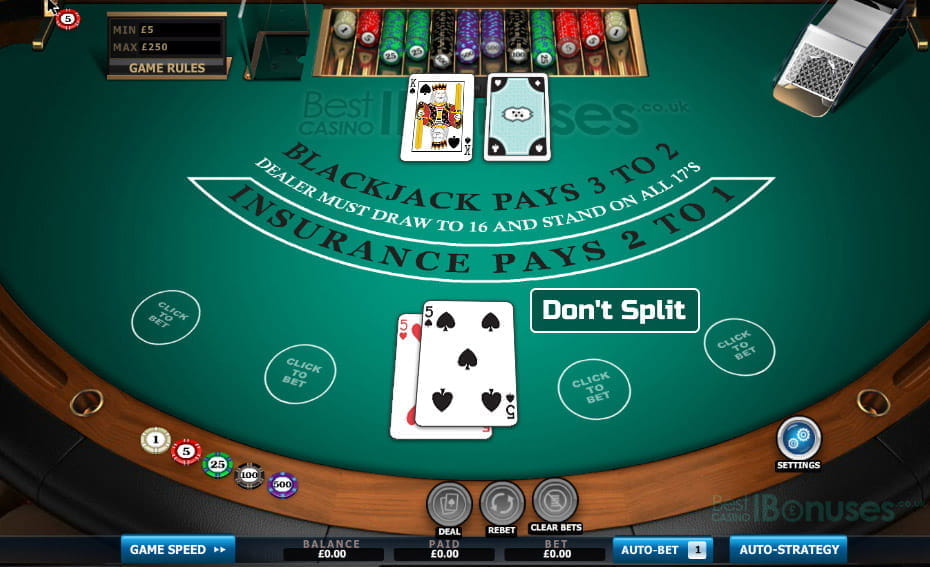
Splitting 4s
Generally speaking, the decision of whether or not to split a pair of 4s depends on whether you are permitted to double down after splitting. If the game you play allows this, then you should split your pair when the dealer’s up-card is 4, 5 or 6. If the next card you are dealt is a 5, 6, 7 or an Ace, this is the right time to double down, plus, the dealer is likely to end up with a stiff hand. In game variants where you cannot double down after splitting, the best action is not to split your 4s, as a starting hand of 8 is more advantageous here.
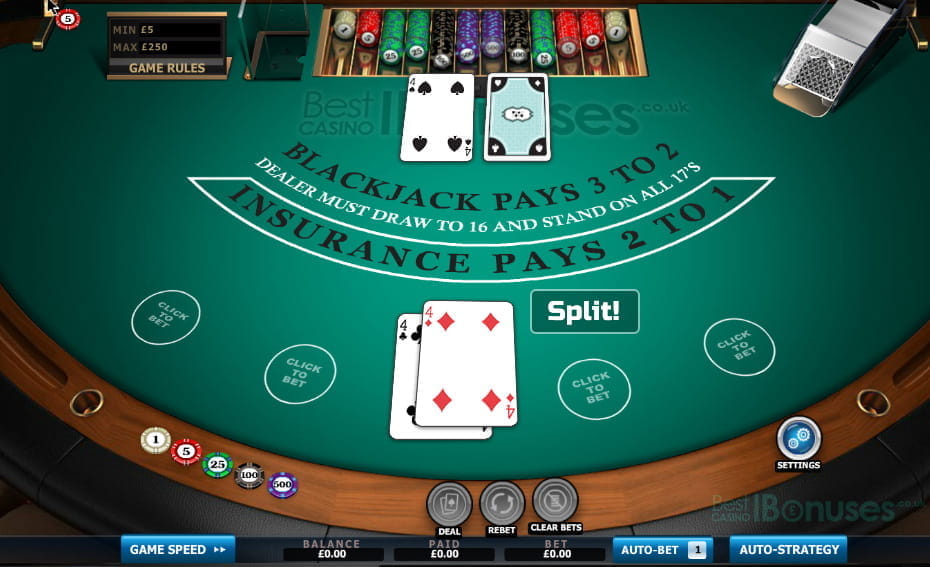
Splitting 2s and 3s
When doubling down is allowed after a split, and the dealer’s up-card is between 2 – 7, then you should opt to split a pair of 2s or 3s. If you hit on a 2 or 3, then chances are that you will get a hand to double-down against the relatively weak card the dealer has. What’s more, by not splitting, you have a starting hand of either 4 or 6, which is very weak as you can easily get a stiff hand by hitting. Plus, the dealer has a high chance of getting a stiff hand also with an up-card of 2 to 7.
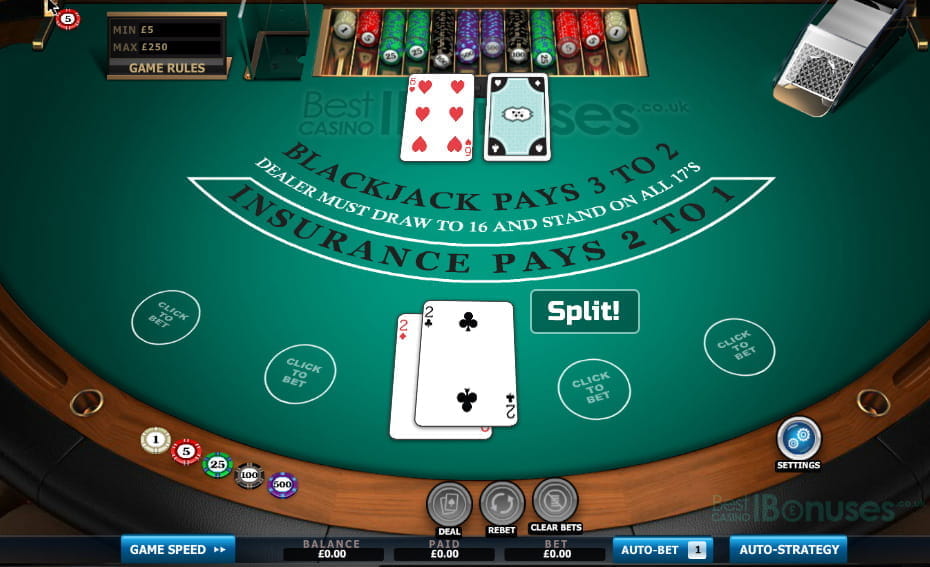
So now you know the basics, it’s time to put these valuable tips into practice. The best advice I can give is to play at a reputable casino with generous blackjack bonuses and a good range of games and table limits to suit your individual needs.